
2025 BMW S1000RR: BT Moto Stage 2 Install, Dyno, and GPS Testing
The 2025 BMW S1000RR doesn’t come slow from the factory. It rolled in for the complete BT Moto Stage 2 treatment, and by the time it left, it was a different animal altogether.
This build featured a full stack of mods: Akrapovic titanium headers, BT Moto’s velocity stacks, a high-flow air filter, IAT relocation, flapper delete, mirror block-offs, and our refined Stage 2 flash. This wasn’t just about chasing dyno numbers—it was about making the bike smoother, faster, and sharper everywhere it counts.
Everything was tested on 91 octane California pump gas, and later MR12 race fuel. Then it hit the GPS for real-world top-speed and acceleration data. Here’s how it all came together.
IAT Kit Install
First things first—the stock intake air temperature sensor had to go. Mounted on top of the airbox, it was picking up heat from the engine bay instead of ambient air. Even on a 70°F day, the bike was reading 117°F at idle. That meant power was getting pulled, even when it didn’t need to be.
BT Moto’s IAT relocation kit moved the sensor up front into the nose duct. Cooler air, accurate readings, and a much more consistent ride. And best of all, it worked seamlessly with their ECU tuning. Knock sensors and fallback maps were left in place for safety, so there was no sacrifice in reliability.
TFT Protector Install
While the tank was up and the dash was exposed, a screen protector went on the TFT display. BMW’s screens tend to collect smudges and swirl marks like magnets, so this simple mod made a noticeable difference. Once clicked in properly, the screen stayed cleaner and was easier to maintain—just a small touch that makes a difference over time.
Flapper Delete Kit Install
Next up was removing the intake flapper system. These doors usually stay closed under 6,000 RPM unless flashed—and even then, they still create turbulence and airflow restriction. With them gone and block-off plates in place, the intake path became a lot cleaner.
Velocity Stack and Filter Install
The stock stacks and filter were removed and replaced with BT Moto’s velocity stacks and a DNA performance filter. A bit of oil inside the airbox (thanks to the crankcase breather) was expected, but the new stacks sealed tightly with rubber O-rings to prevent any seepage.
The DNA filter was essential here—once airflow is increased with stacks, the filter needs to keep up. With everything installed, the airbox went back together solidly, with no shifting or gaps.
Akrapovic Exhaust Install
Time to handle the business end of airflow—getting it out. The OEM exhaust is surprisingly efficient, but the Akrapovic titanium system still made meaningful improvements, especially in the mid-range. Plus, it shaved over 14 lbs off the bike.
The swap wasn’t exactly plug-and-play. Tight springs, oxygen sensors, and close quarters meant patience was key. But with the oil cooler protected and the proper tools on hand, the header went in cleanly. Proper spring orientation avoided future vibration issues, and all sensors were installed to support BT Moto’s full-time closed-loop tuning.
Stage 2 vs Stage 1 Pump Gas Dyno
Strapped to the dyno, the 2025 BMW S1000RR showed what the Stage 2 flash (Blue color) could really do—still on pump gas. Compared to the Stage 1 file (Red color) with no bolt-ons, Stage 2 delivered a consistent power bump across the RPM range.
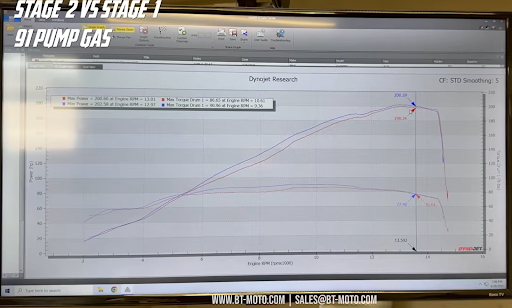
Peak horsepower went up by 2, but the mid-range gains were the real story—over 10 additional wheel horsepower and 7 lb-ft of torque where it matters most. These weren’t just dyno numbers—they translated directly to better throttle response and acceleration in real-world riding.
Also included in Stage 2 was partial throttle tuning, sharper quickshifter settings, and smoother transitions throughout the entire rev range. Nothing was left untouched.
Stage 2 BMW S1000RR vs 2025 Ducati Panigale V4 Pump Gas
What about the Ducati Panigale V4? That was also tested on pump gas, and the S1000RR in Blue walked away from it in the mid-range against the V4 in Red. Between 8,000 and 11,000 RPM, the BMW put down up to 15 more wheel horsepower and 10 more lb-ft of torque - destroying the V4.
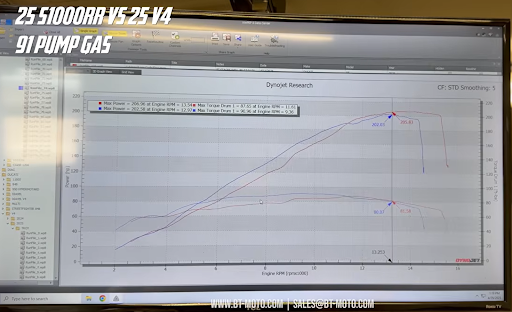
At the top end, though, the V4 stretched its legs and took the lead from 11,300 RPM to redline—perfect for track use. But on the street, where most riding happens below that, the BMW has the clear advantage.
Stage 2 vs Stage 1 Race Gas
After draining the tank, the RR got a fresh fill of MR12 race fuel. This brought out the absolute best from the full bolt-on setup. Power increased nearly everywhere, with peak figures hitting 211 whp—same as stock peak, but with a much fatter curve.
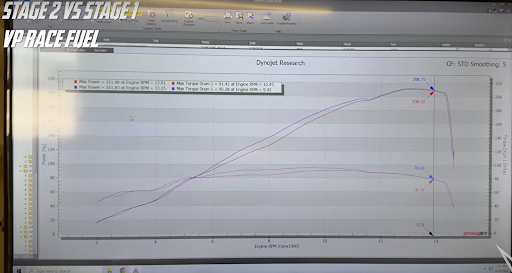
The top-end stayed mostly the same (the cylinder head had clearly reached its flow limit), but everything below it felt stronger and more responsive. The bike wasn’t just faster—it felt eager, smooth, and dialed in.
Stage 2 vs Completely Stock
Looking back at a bone-stock dyno run, the gains were massive. From 191 to 211 wheel horsepower, and from 14 to 24 additional wheel horsepower across key parts of the rev range. Torque jumped by 10 lb-ft in the midrange. It felt like a completely different machine.
This wasn’t just a matter of removing restrictions. BT Moto’s Stage 2 made over 300 ECU changes, including ignition tables, adaptive fuel mapping, knock-safe tuning, and full-time closed-loop fuel control—features no other flash on the market could fully replicate.
44T Sprocket Install
To help the bike break through its 188 mph GPS limit, a 44-tooth rear sprocket was installed. With the added torque and gearing tweak, it was time to take things back out on the road and see what the top speed really looked like.
60-130 / 100-150 / Top Speed GPS Testing vs Stage 1
On a long, flat stretch of road, the S1000RR hit 194 mph GPS—a solid bump over the previous 188 mph cap. The 60–130 mph time dropped to 3.0 seconds, which is blistering considering a 200-lb suited rider and second gear roll-on to keep things consistent with Stage 1 testing.
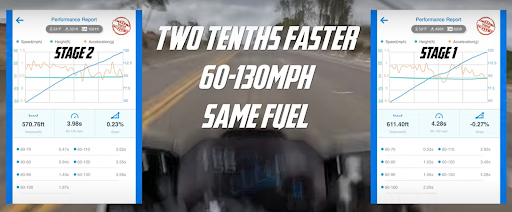
The takeaway? Proper bolt-ons and tuning made a real-world difference. This wasn’t just a dyno queen—it was a bike that delivered in actual riding conditions.
Key Takeaways
BT Moto’s Stage 2 flash for the 2025 BMW S1000RR took everything good about Stage 1 and refined it into a razor-sharp performance package. It wasn't just about raw numbers—Stage 2 improved ride quality, throttle feel, mid-range pull, and overall usability without compromising reliability.
Stage 1 was perfect for everyday riders who wanted more punch without going deep into mods. Stage 2 was for the ones living in the upper RPM range—track riders, top-speed chasers, or anyone who wanted every ounce of performance unlocked.
And while the 2025 engine shared its core with the 2023 and 2024 models, the refinement in the electronics, quickshifter, and throttle made this year’s RR feel more complete. Add in the aggressive styling and downforce winglets, and it was clear—this bike didn’t just go fast. It felt fast.




.jpg)
.jpg)
.jpg)
.jpg)
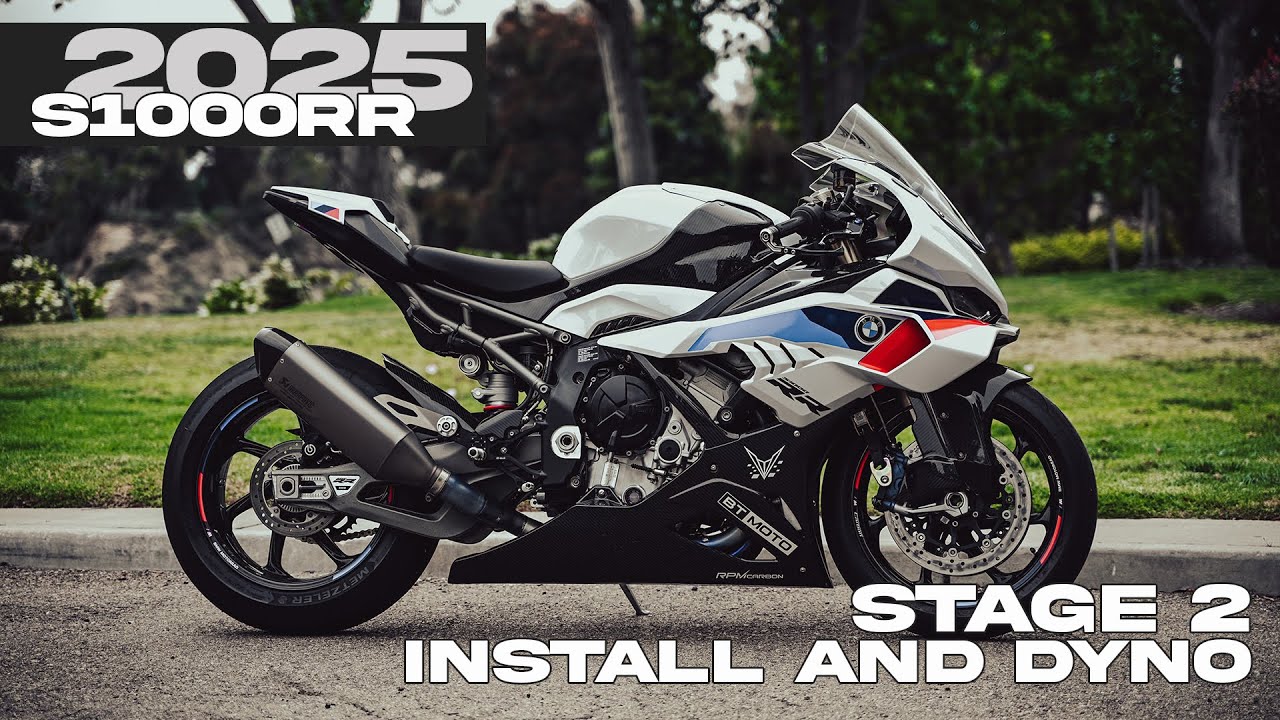


.jpg)